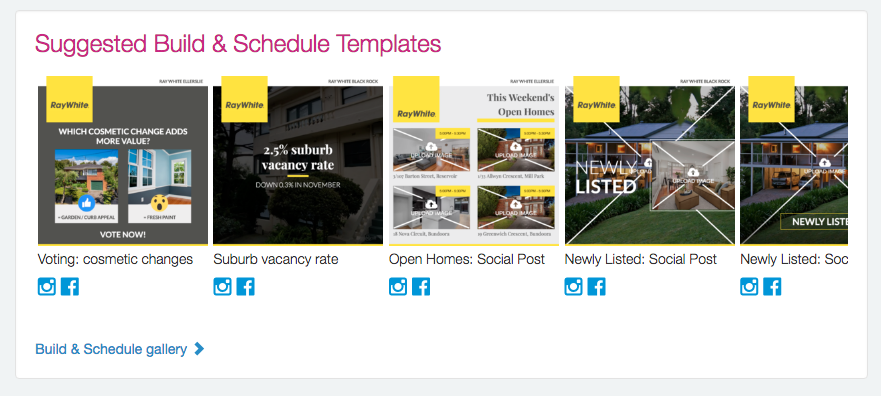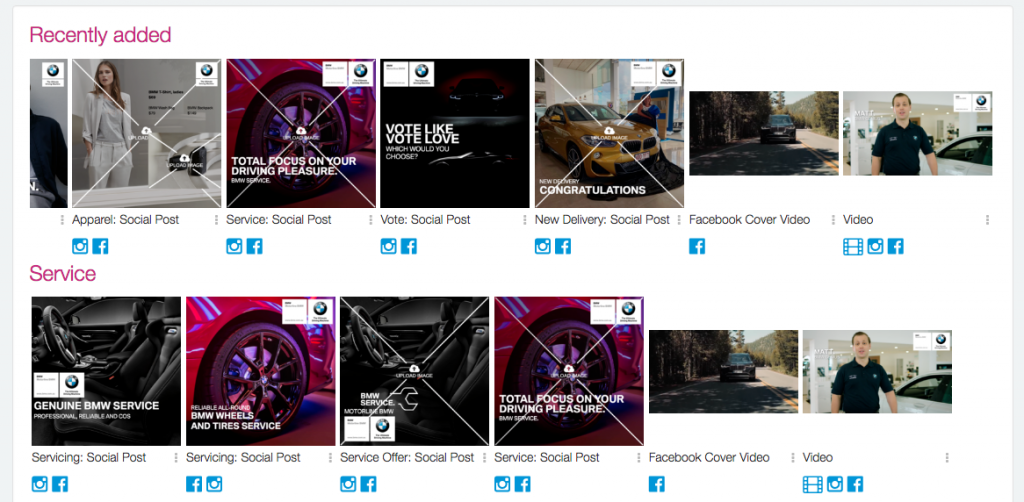Usually marketing managers think the best they can aim for with digital asset management (DAM) is ‘organized’. In truth, the setup and configuration can have a meaningful impact on a franchise’s local marketing efforts.
That’s a huge opportunity in multi-location companies, where communication and direction tends to get diluted as distance from head office grows.
It’s entirely possible to configure your DAM library to encourage frequent use, at the right times, with the right assets. Sound difficult? It doesn’t have to be.
Follow these simple guidelines to dramatically increase DAM utilization and improve your franchisees’ local marketing execution:
Add new assets regularly and feature them front and centre
Seeing fresh assets is a great carrot to check in regularly. You want your franchisees to feel like they’re missing out if they go a week without logging in.
There should be a ‘recently added’ or ‘featured assets’ section that has users eager to dive in and discover each time they login.

Align category names with strategic priorities
You should use your category names to railroad your users into the type of marketing efforts you want them to undertake in order to achieve their business goals.
In the automotive industry for example it pays to align the asset categories with the company’s profit centres. For example, new cars (sales), apparel, finance, and servicing.
In truth, as new product is such a feature of the industry it’s likely this would be split into sub categories of cars i.e. sedans, SUVs, sports etc. But the splitting out of the other company business lines is important to remind users to use the marketing support available to achieve their goals across all these business lines.

If left to their own devices, automotive dealers nearly always gravitate to simple ‘product and price’ marketing; just check out their Facebook pages. They could nearly always benefit from a steer towards their other important priorities.
Place more important categories towards the top
The order of your categories makes a huge difference in the usage rate of the assets within them. If your most recent campaign is the most important thing happening from a marketing perspective right now, it should be positioned prominently in your asset library. Have evergreen categories that are less important? They can go mid-pile or lower. Things like general print collateral (think business cards) usually fall into this category.
Name the categories in an engaging way
Rather than go for a generic ‘Q1 Acquisition campaign” name the asset category after the campaign e.g. “Summer Stock Runout Campaign”.
It adds interest and urgency for internal users, just as it does for customers.
Don’t over-categorize
You don’t want to overwhelm users with too many categories of assets. Aim for 6-12 in total. While search fields and filters help finding assets, you need to understand the natural behaviour of franchisees is to ‘window shop’. This is one of the primary reasons why new assets need to be featured prominently at login; users won’t take the effort to go searching for them.

End-date assets and categories
This is the most important thing you can do to keep your asset management system current and user friendly. Banish campaign assets from the interface the day after a campaign ends to avoid confusion and keep the library clutter-free.
Most large brands have libraries full of assets that pre-date their last brand refresh, nevermind their last campaign. Stay on top of it and cull ruthlessly!
Maintain your asset library
This might be stating the obvious but asset categories, asset tags and indeed the assets themselves need to be audited regularly.
Asset tagging is one of the key areas that slips over time. Make sure all designers and other uploaders have a universal guide to asset tagging so tags stay consistent. That way users can expect reliable results when searching for assets.
Configure your asset library for humans
A thoughtfully configured asset library not only ensures ease-of-use but can actually vastly improve marketing performance from franchisees.
By acknowledging the natural human behaviours and tendencies of your asset users, you can configure things accordingly to get the best outcome for the company. Too often asset managers take a way-too-logical approach to configuration and forget to appeal to the humans using it.
In franchises, the users are usually impatient jack-of-all trades. By keeping things intuitive you can use this to your advantage and get the most out of your digital asset management.


